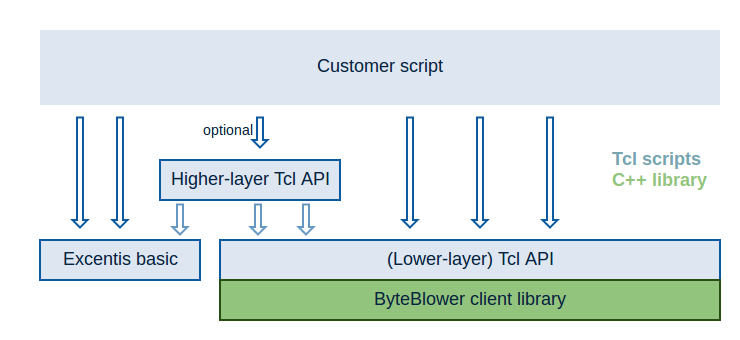
The ByteBlower Tcl API software consists of three components.
The lower-layer Tcl API provides an object-oriented Tcl interface to the ByteBlower client software, which in turn controls the ByteBlower server.
The API is built around the concept of a ByteBlower port, which represents a single (virtual) host. Such a host is created on one of the physical ByteBlower interfaces. By connecting such an interface to the network or system under test (SUT), the host on that physical interface is attached to the network.
On a ByteBlower port:
The higher-layer Tcl API is a usability layer on top of the lower-layer API. It provides an easy way to create and execute scenario configurations. It uses the concepts of flows and scenarios, that are familiar from the GUI.
Higher-layer scenario configurations are composed in a declarative way. Upon execution, this configuration is mapped by the HL API engine (called Execute Scenario) to the correct sequence of lower-layer calls. Then the scenario is executed and the result data are returned to the user.
Currently only frame blasting scenarios are supported by the higher-layer API.
The excentis basic module provides some useful functions when interacting with the ByteBlower API. Its functionality includes the generation of valid network packets for frame blasting and utilities to work with packet filter strings.
These support functions can be used when scripting against either the lower-layer or higher-layer APIs. None of them are dependent on the ByteBlower API, so they can even be used outside the ByteBlower context!
If you are familiar with the first iteration of the Tcl API, the following pages will bring you up to speed with the new 2.x features:
Want to see the Tcl API in action immediatly? Check out the examples page!